#the pilgrimage saga
Text
There's a non-zero amount of ✨denial✨in response to certain podcast-based events this week, as I bring you my thoughts about the fiction podcasts I've been listening to in this week's audio fiction Sunday blog post!
#audio fiction#audio drama#podcasts#audio fiction sunday#camlann#tell no tales#world gone wrong#inn between#hello from the hallowoods#among the stars and bones#midst#forgive me!#breaker whiskey#the kingmaker histories#the pilgrimage saga#wanderer's journal#copperheart#the way we haunt now
41 notes
·
View notes
Text
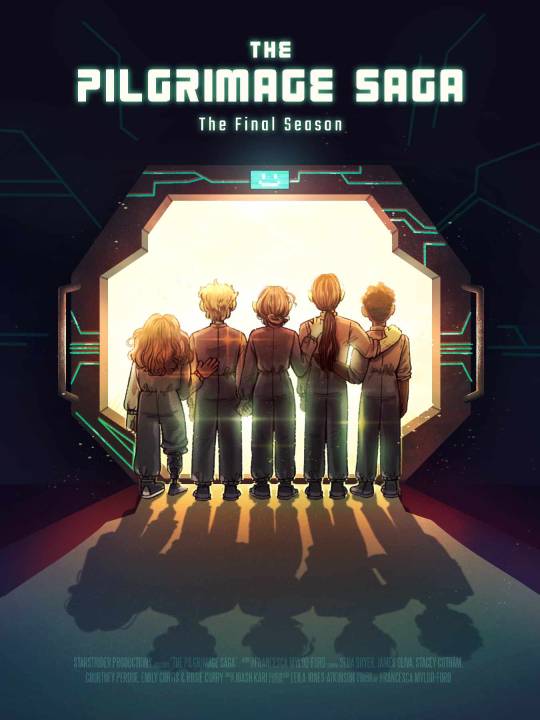
Ready for another season? 🚀
Our first bonus episode releases NEXT SATURDAY at midday GMT!
Listen to our trailer here:
#the pilgrimage saga#audio drama#indie podcast#podcast#podcasting#uk audio fiction#uk audio drama#uk podcasts#gays in space#scifi#science fiction#space opera#spaceship#humans are weird#humans are space orcs
31 notes
·
View notes
Text
✨Episode 17 - Decision Episode!✨

The Traveller feels out of sync; and an entry about a unique form of art...
Subscribe now Spotify, Apple Podcasts or your podcatcher of choice 🚀✨ Full transcript available here.
Travelling Light is a science fantasy podcast that follows the Traveller as they explore their galaxy, collecting stories from the people they meet and adding them to their community archives.
Every week our artist @diabeticspoon92 illustrates the episode’s archive entry. This week's entry was based on an idea by Lu! 🥰
If you’ve got an idea for an archive entry, you can send them to us via social media, by email, or through monstrousproductions.org. You can either send a fully written entry or a prompt - whatever you've got, we want to hear it!
This episode includes an audience decision. Vote on whether the Traveller should go easy on the other team in the snowball fight, or if they should play to win, by making a donation at ko-fi.com/monstrousproductions. Voting closes at 12.00PM UK time on Tuesday 16th.
We have just updated our Ko-Fi tiers so that almost all our rewards are available for just £1 a month! There's never been a better time to join 😍
Stay tuned to the end of this episode to hear a trailer for The Pilgrimage Saga from @starstrider-productions, a found-family space opera about five humans and an AI trying to find a home. Listen wherever you get your podcasts, or visit their website to learn more!
Finally, if you're enjoying the show, please consider sharing it with your friends, posting on social media, or leaving a review. We're totally dependent on word of mouth to reach new listeners, and your support really makes a difference!
🚀✨ See you next Friday! ✨🚀
#travelling light podcast#travelling light#monstrous productions#new podcast#new episode#podcast recommendations#fiction podcast#audio drama#science fiction#science fantasy#speculative fiction#queer podcast#queer creator#monstrous agonies#fantasy#the pilgrimage saga#space opera
20 notes
·
View notes
Text
When someone says "no other podcast scratches the itch like wolf 359" and then I roll up with a list of podcasts that scratch the same itch--
#wolf 359#podcasts#the pasithea powder#the strange case of starship Iris#the pilgrimage saga#girl in space
5 notes
·
View notes
Text
Sascha finds Gabriel to be beautiful?? 👀👀👀👀👀👀👀
#the pilgrimage saga#pilgrimage pod#pilgrimage podcast#pilgrimage saga#pilgrimage saga pod#pilgrimage saga podcast
3 notes
·
View notes
Text








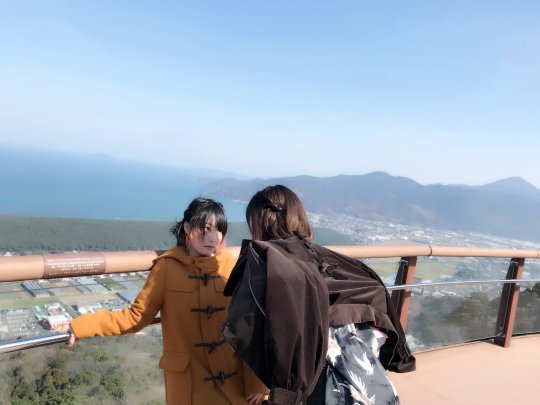

Photographs alongside their anime counterpart of Kaede Hondo (Sakura Minamoto), Maki Kawase (Junko Konno) & Rika Kinugawa (Yugiri) on their "Official Bus Tour of the Holy Land Pilgrimage" trip to Saga Prefecture at the start of 2019, where they alongside various staff from the anime visited various real life locations featured in the first season of the anime.
#Kaede Hondo#Maki Kawase#Rika Kinugawa#seiyuu#Zombieland Saga#anime caps#Official Bus Tour of the Holy Land Pilgrimage#Saga#kinugawa putting her jacket on her shoulders to serve as Kotaro's stand in so funny
68 notes
·
View notes
Text
I love that, on Ted Lasso, whenever a character starts acting weird or inconsistent with the show’s themes or whatever, it’s not just that the writers were sacrificing development for comedy or drama or whatever; it’s because there’s a thought process behind it. I was getting so uncomfortable whenever Beard was referencing Nate, because he wasn’t just pissed but downright spiteful - and for a show that is so much about nein schadenfreud and taking no shit but doing no harm, Beard trying to sic the team on Nate and throwing axes at pictures of his face just felt loaded with ick. It felt like the kind of revenge fantasy you’d see play out on a 90s sitcom, but not Ted Lasso. It felt cruel.
And then, and then we find out that Beard is Nate. Beard was shown kindness by Ted (like Nate), Beard was brought up from the worse place of his life by Ted (like Nate), and after all that Beard betrayed Ted (like Nate). And suddenly every spiteful comment and bitter look makes that much more sense, because this whole saga has been so much more personal to Beard, he’s seen himself in Nate’s actions, every single moment of seeing Nate’s betrayal play out in real time has been a poisonous reminder of what he did. Of course he was more pissed than Ted was.
And even if Ted has forgiven him, those final couple of scenes clearly show that there’s a little part of Beard that has never forgiven himself. He’s been repaying Ted all this time out of gratitude, but I wonder if it was also out of shame and guilt. (Halfway around the world is a long way to go to start a new job with your buddy, but those trying to absolve themselves from past misdeeds used to make lengthy pilgrimages for a reason.) I think there’s always going to have been that little nugget that always hated himself for what he did, that made it so easy to hate Nate as well. And that makes Beard’s reconciliation with Nate that much more beautiful - he’s forgiven Nate, but maybe he’s also finally forgiving himself.
#ted lasso#ted lasso spoilers#coach beard#(bonus if this also means he can finally leave jane with some of his issues being sorted now)#nate shelley
2K notes
·
View notes
Note
So Sam can’t be all sharp edges. What aspects of him are kinder and gentler?
I LOVE this question so much. Thank you for asking.
Sam indeed has a lot of hard edges, but also quite a few soft ones if you’re looking in the right places.
1. He’s a closeted cuddler and certified Little Spoon. When Sam is at his Sammiest he’s a human lap cat.
2. He is unnervingly observant and his brain is a steel trap for personal details. If you make a comment about something you like, or a thing that you want, in his presence, he will remember. If he encounters it in the wild and it’s within his power to obtain, you’ll probably wind up with it. And he’s confused if you’re overly surprised or touched by this.
…of course he doesn’t always use this skill for good. He also remembers the things that drive you BATSHIT and keeps that info handy, too. I have not pinpointed the specific incident that instigates the Great T-Shirt War with Garrus, but I am positive Sam starts it, by buying him a t-shirt that says something like, “Expel 10’s Biggest Fan,” when Garrus insists they’re the worst band to ever exist at dinner one night. This catalyzes an ongoing saga of attempting to buy each other the most obnoxious t-shirts imaginable, that lasts the rest of their lives.
3. If you want to Do a Thing that he does not want to do, but it is important to you, Sam will Do the Thing with you. Every time. Will he complain? Yes, but mostly token resistance. He is willing to make himself extraordinarily uncomfortable for the happiness of others, and he rather enjoys the opportunity to experience something he isn’t interested in or actively dislikes through the eyes of someone who cares about it.
4. As someone who didn’t grow up with much exposure to animals or wildlife, he wants to pet EVERYTHING. One of his life goals is to see an armadillo in person, take a picture with it, and send it to Wrex with the caption, "it was great running into you the other day." No one knows why he thinks this is so fucking funny.
5. While he and Kaidan do not have kids, Sam actually quite likes kids, and they fucking love him. Horsing around with them gives him a chance to reclaim some of the childhood he never got. Krogan occasionally make ‘pilgrimages’ with their offspring to see Commander Shepard, and he gets a huge kick out of throwing them around in the lake and climbing trees at the orchard, things most of them do not get to do on Tuchanka, and things he didn't get to do as a kid.
#swaps replies#butter-and-too-much-bread#'shoot it again sam' shepard#i love him so much it's dumb#opus!verse#thank you so much for asking!!!!
57 notes
·
View notes
Photo

I write music with an exclamation point!
- Richard Wagner
If he were alive today Wagner would be 210 years old. Born on 22 May 1813, Wagner lived a tumultuous life created by his own very unstable personality. But there is no denying the man, infamous for his antisemitism, political exile, and constant poverty, was also a genius in every manner imaginable.
It is no stretch to say that without Wagner, music, theatre, and even other art forms such as cinema, would not be what they are today. Wagner created modern music and modern opera. He revolutionised the theatrical experience for audience members. He reshaped the understanding of what opera was and could be.
He was not only a composer, but also a librettist, conductor, stage director, actor, philosopher, writer, and poet. However, few composers are as divisive as Richard Wagner. Even putting aside his controversial character, holding political and antisemitic views, his music split audiences. A bit of a megalomaniac, his operas became all-engulfing “music dramas”, drawing on his concept of the Gesamtkunstwerk (the total work of art) which synthesised music and poetry with stagecraft, a unification of the arts through theatre. He even had an opera house built – the Bayreuth Festspielhaus – specifically to stage his works - one of the most incredible theatres in the world.
Wagner’s music was revolutionary and it influenced generations of composers. Claude Debussy made two pilgrimages to Bayreuth. In 1877, after hearing Act 1 of Tristan und Isolde, he declared it “decidedly the finest thing I know”, but by 1903 he had turned dissenter, commenting that Wagner was “a beautiful sunset that was mistaken for a dawn”.
Although other composers had used Leitmotifs before, Wagner took it to new levels. Der Ring des Nibelungen - his epic 15-hour tetralogy based on Norse sagas charting the fall of the gods - employs recurring Leitmotifs that represent characters, objects, actions and emotions. Indeed His works are among the first to be truly through-written without functional musical numbers that stopped for applause. He broke from previous musical tradition in how he saw his works as symphonies, the orchestra’s complexity pushed beyond anything realised before.
#wagner#richard wagner#quote#opera#classical music#music#musical theatre#the ring cycle#composer#german#bayreuth#genius#culture#arts
49 notes
·
View notes
Text
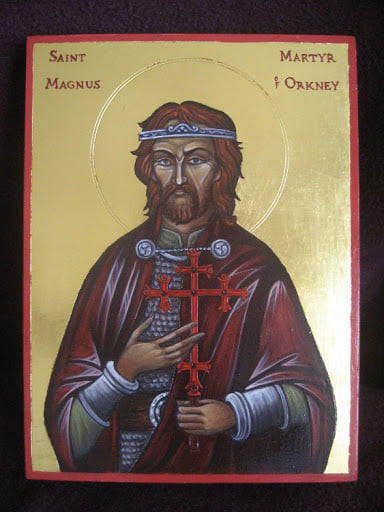


On April 16th 1117 Earl Magnus of Orkney, later St Magnus, is betayed and murdered by his cousin Håkon on the island of Egilsay in Orkney.
This is a great wee story, most of it gleaned from OrkneyJar, dates differ on other sites and I will post a link at the end going through the alternatives.
Orkney was ruled for most of its history by Norway. It occupied a crucial position off the north coast of Scotland for the Norwegian ships that harried England, Ireland and Wales and indeed Scotland, from the 9th to the 12th Centuries.
Hakon and Magnus grew up in Orkney. Their fathers, brothers Paul and Erlend, were joint Earls of Orkney: each ruling half of the islands. It was a period of peace and prosperity. Hakon developed into a proud fighter and warrior. Magnus preferred books to fighting and turned to the church for his strength.
Upon the death of their fathers, the Earldom passed to Sigurd, the son of King Magnus of Norway. During this time Hakon accompanied the King on various expeditions down the west coast of of the British Isles and lived up to his reputation as a fierce and fearless warrior.
Magnus joined the king on one expedition – a raiding expedition down the west coast of Scotland, travelling as far south as Angelsey. He refused to fight against English noblemen with whom he said he had no quarrel. (Some version say they were Welsh)
Rather than join battle, he sang psalms and prayed. He was no coward, but did not believe in fighting for its own sake. The king’s wrath was incurred so Magnus escaped from the King’s ship one night and swam to shore of Scotland where he had to disappear for several years until the old King was dead.
When the old king died, Sigurd succeeded to the Norwegian throne and Hakon was given the Earldom of Orkney.
Hakon ruled alone for a while, until Magnus arrived from Scotland and claimed possession of his patrimony, with the blessing of the new King. Hakon initially refused to give up any of Orkney, but as the local noblemen wouldn’t fight Magnus, he had to cede half of the islands. They ruled as their fathers had done.
Hakon and Magnus ruled Orkney in harmony for seven years; defending their Earldom from invaders and marauders with success. They appeared to have had a good understanding and Orkney flourished under their joint rule.
It seems that Magnus was the more popular of the cousins. The Orkneyinga Saga tells of a blameless life, a wise man, eloquent, strong-minded, magnanimous, and more beloved than any other man. He was generous to the deserving but severe with robbers and raiders. He punished rich and poor impartially for wrong-doing. His justice was fair and consistent. To cap it all, he was God-fearing. He married a Scots girl and lived with her for ten years without touching her, to honour a bond between him and God. When he was tempted to break his bond, he plunged into a tub of freezing water and prayed for divine guidance.
Hakon became increasingly jealous of Magnus’ popularity, fuelled at least in part by men of evil dispositions, Sigurd and Sighwat Sokki, who spread inflammatory rumours in the courts of both Earls. It resulted in Hakon and Magnus both taking troops to the regular meeting of Orkney noblemen on the Mainland. Battle was only averted by the intervention of noblemen who, as friends of both earls, managed to broker a truce.
To seal the bond of their reconciliation and continued cooperation, Hakon and Magnus arranged to meet on the island of Egilsay. They agreed to take only two ships each and few men. Magnus stuck to this arrangement and was on the island, praying, when Hakon arrived with eight ships and men armed to the teeth. His intent was clear.
It is recorded that Magnus had no concern for his own life, but wanted to save his cousin from the consequences of a shocking crime. He offered to leave on pilgrimage, never to return to Orkney. Hakon refused. He offered to submit to imprisonment in Scotland. Hakon refused. Finally he said “Let me be maimed as you like, or deprived of my eyes, and throw me into a dark dungeon”. Hakon was set to accept this offer, but his noblemen objected, saying that one or other of the Earls had to die that day. Hakon replied he would rather rule than die. Magnus’ fate was sealed.
In one more twist to the story, Hakon ordered his standard bearer to kill Magnus. He refused, knowing that the killer of such a popular man would be an outcast in Orkney. It was to his cook, Lifolf, that Hakon turned, knowing that he would not dare refuse the order. As Lifolf wept, Magnus prayed for him, forgave him, then prayed for the souls of his enemies, Earl Hakon included. Lifolf took up his axe and brought it down on Magnus’ forehead.
The place where Earl Magnus was slain had been rocks and moss, but after his death, grass grew strongly, indicating to the saga-writer that it was the death of a holy and righteous man. Hakon permitted the body to be buried in the church on the Brough of Birsay, which had been built by their Grandfather, Thorfinn. Soon after the burial a holy light was seen above the church and the sick were cured when they prayed at the grave. Pilgrimages started from all over Orkney.
Earl Hakon took over the rule of all of Orkney and extracted huge fines from those who had been loyal to Magnus. After a while, he made a pilgrimage to Rome and perhaps he saw the error of his ways, because against all the odds, he returned to Orkney to become a just and popular ruler, much lamented when he died, many years later.
The cult of Magnus spread well beyond Orkney’s shores. He died on April 16th 1117 and that day is kept as the day of his martyrdom. In the 12th Century saints could be chosen by popular acclaim; the canonisation process did not need a process at Rome. By 1136 he was a saint, authorised by the Bishop of Orkney. In 1137 the building of St Magnus Cathedral, which stands in the centre of Kirkwall today, was started by Earl Rognvald, Magnus’ nephew. It was erected with the express purpose of receiving the relics of St Magnus, which were transferred there when it was ready for use.
There was no firm evidence that the bones of St Magnus really did reside in St Magnus Cathedral until 1919, when extensive cathedral renovation was going on. Some loose stones were removed from a pillar, with the intention of re-mortaring them. Within a cavity behind these stones there was a box containing most of a human skeleton. The state of the skull conformed with the story in the sagas about St Magnus’ death wound to the head. St Magnus’ relics had been found. They were replaced and the stones fixed back in place.
A couple of links here the first is regarding a reconstruction of his face, fascinating stuff! http://www.bbc.co.uk/…/uk-scotland-north-east-orkney-shetla…
The second link explains the dates of his murderhttp://www.orkneyjar.com/history/stmagnus/magnus6.htm
45 notes
·
View notes
Text
309 on my randomised list is @pilgrimagepod!
Far in the future, humans have left Earth. The RIN Starstrider - crewed by five humans and one AI - is on a mission to return to a home none of them have ever known, with the goal of bringing humans back to the world they had to abandon.
Two seasons are currently available, of a total of 21 episodes. Season three will be the podcast's final season.
#the pilgrimage saga#random podcast recommendations#audio fiction#audio drama#podcasts#podcast recommendations#podcast recs
9 notes
·
View notes
Text

BONUS: DO WE HAVE A DEAL?
Out now whereever you get your podcasts.
Spotify: https://podcasters.spotify.com/pod/show/turpentine-productions/episodes/BONUS-Do-We-Have-a-Deal-e20bo68
Starstrider out.
#the pilgrimage saga#audio drama#indie podcast#podcast#podcasting#uk audio drama#uk podcasts#science fiction#space opera#gays in space#episode drop#new episode
11 notes
·
View notes
Text
Nissa's Pilgrimage Part 3: Growing Pains and Gatewatching

She unfolded the topmost layer of the silk pouch, revealing the four small seeds. One by one she planted them in the holes she had dug. As she did, she whispered to them of her dreams for the forest they would one day become. She told them of the world they had come from, what Zendikar had been like, and what it had been through. And then she told them of the pyromancer, the telepath, and the fearless leader who had come to save them, who had made this world a safe place for them to grow.
With a final breath, Nissa pressed her palm to the ground and reached into the land; there was one more thing to do. She brushed against the soul of Zendikar. She told it to take care of the seeds. But before it could respond, before it could pull her in, encircle her and hold her close, she lifted her hand, and with it her soul. "I will see you again," she said. "I promise." Then she stood up, moving away from the world she had known and toward the one that was waiting. — "Zendikar Resurgent"
Introduction
Hi! During part one of this essay series, I introduced Magic the Gathering’s Nissa Revane, iconic green (and blue ... and black) planeswalker and cinnamon roll with a tragic backstory (is Nissa actually a One Piece character?). I talked about my own connection to this character, why she means what she does to me, and where she comes from. During part two, I analyzed Nissa’s dual origins, why her original backstory was retconned into the aether, and how that has been interpreted over the years. For part three, I am going to explore how Nissa was characterized throughout the genesis of the Gatewatch story arc: Battle For Zendikar and Oath of the Gatewatch.
Despite being roughly half a year in real time, this covers a lot of narrative ground, and as you’ll see, Nissa goes through a lot of growth during this single set; that Nissa herself goes through a metamorphosis in how she interacts with the world is a direct mirror how she is characterized by the Magic Story Team as they hone the craft of Magic storytelling. A lot Vorthoses at the time argued that Nissa’s characterization was weak and that the Nissa presented in the Battle for Zendikar block is single-minded to a fault, the only thing occupying her mind is the survival of Zendikar, the destruction of the Eldrazi, and:

It’s easy to find the Nissa of this era a little boring and one-note, and the prose itself of the Battle for Zendikar block — famously a little lacking — does little to turn this around.
However, underneath the veneer of sometimes poor writing, there is more than meets the eye with Nissa’s characterization. In fact, even though the Battle for Zendikar and Oath of Gatewatch stories function primarily as an Avengers-type origin myth, I would argue that Nissa is more-or-less the main character of the saga. The Eldrazi are free primarily because of Nissa’s mistake, and the action of the plot follows her attempt to rectify this. Many turning points in the story are due to her appearance: the liberation of Sea Gate, the entrapment of Ulamog, and most importantly, the destruction of the Eldrazi Titans themselves were only due to her influence on the situation. Nissa is also the character who goes through the most change: Gideon steps into his role as the charismatic, fearless leader he always wanted to be, Jace and Chandra both learn to shed their checkered past and become determined heroes heroes, despite whatever commentary any outside forces have on them, but Nissa …
Nissa comes to terms with the grief that most of the violence and tragedy on Zendikar is due to her own error; she learns to shed the xenophobia that was ingrained in her by her Joraga upbringing; she learns that no matter how much of a ‘chosen one’ she is, she can’t win every battle on her own; and most importantly to the plot of future Magic stories, she learns to trust other people and embrace intimacy with other people rather than only with the spirits of the natural world. We are presented with a character on the brink of metamorphosis, and unlike the Nissa of old, she embraces the bonds she creates with others and blossoms into something new instead of rejecting them for the sake of austerity and wilting into stagnation.
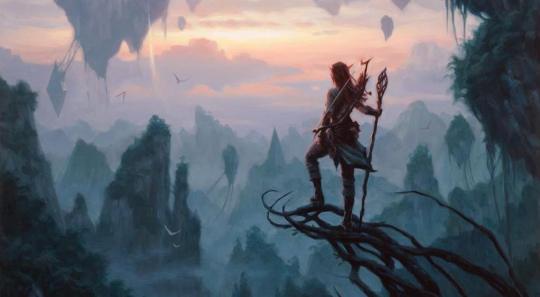
Chapter 1: —Ashaya—
Before jumping into an analysis of Nissa’s characterization, let’s address the elephant in the room that was brought up earlier: the prose of the Battle for Zendikar block. In many places… it’s just not that great, and this had a significant impact on how Nissa was viewed in the Gatewatch’s early years. A lot of her stories suffer from endless repetition. One of the more infamous examples of this is in “The Silent Cry,” which is were the —Ashaya— memes were born:
When Nissa's breath came back it was in great gasps; she couldn't get enough air.
The silence around her was heavy and oppressive. And her vision was dull.
Ashaya. All she could think was Ashaya.
Nissa reached out into the land to summon the elemental.
But there was nothing there to grasp.
Ashaya.
She reached deeper, plunging her feeling into the land.
But that was where the silence was coming from.
Nissa's ears rang and the world spun.
Ashaya.
She dragged herself over to the pile of branches and mounds of dirt. Her trembling fingers flitted over the broken pieces. Which splinter of wood had been Ashaya's finger? Which leaf had grown from the top of her head? Where were the roots that had held her soul?
Ashaya.
The silence was overwhelming.
Nissa staggered to her feet, but the sensation of vertigo sent her back down. She hit the ground with a hard smack. A sharp rock cut her cheek and a mound of dirt dug into her side. The land did not cradle her, it didn't protect her—it hurt.
No.
This made no sense.
Ashaya.
What the author is clearly trying to do here is depict Nissa’s sense of loss at the disappearance of —Ashaya— an elemental being she (rightly) believes is the incarnation of Zendikar’s soul. One one hand, this goes a long way to show the reader how holistic Nissa’s approach to life is: in her world, the world itself has a literal soul and a life of its own that everyone living on it relies on, and this soul’s survival is tied to the survival of the planet itself. It also goes a long way to showing Nissa’s social mindset at the time; the Nissa of this era has spent decades by herself with only the ephemeral spirits of the plane to talk to, and its loss is paramount to losing the only friend she’s made in her last forty-or-so years on her own. On the other hand, however, this melodramatic sense of despair can feel a little trite because we, as readers, have seen what is going on in the broader world. Entire civilizations have been ground to dust in the last three years, and in just the previous story in the arc — “Slaughter at the Refuge” — Gideon and Jace return to Zendikar to a scene straight out of a war movie:
And bodies—bodies were everywhere.
Some looked like the casualties of any other war, blood soaking their chests and streaking their faces, limbs torn free, gore spilling from gaping gut wounds. But more—so many more—had partially crumbled away, leaving heaps of dust where heads or legs or arms had been. The smell of blood and entrails mixed with the carrion odor of the Eldrazi and turned Gideon's stomach.
The audience can logically parse exactly why Nissa is so upset at the loss of Ashaya: Ashaya has been her only real friend for a very long time, her way of life ties her to the spirit of the land itself, her magic is tied to the spirit of land itself, and she sees her partnership with Ashaya as her one real chance to free Zendikar of the horrors she is at least somewhat responsible for. However, the mawkishness that Nissa is written with in scenes like the one above from “The Silent Cry” can come off as trite when the audience is intimately aware of the broader ramifications of this worldwide conflict.

Chapter 2: Sentimental or Stagy?
Despite occasional missteps with the prose itself, however, Nissa’s character arc throughout the Battle for Zendikar stories is much stronger than many argued back in 2015 and 2016. I said earlier that many found Nissa in the Battle for Zendikar stories to be a little one-note and boring, and I would argue this is intentional. First of all, Nissa’s singularly-focused priorities are a realistic response to the situation she has found herself in.
When we pick back up with Nissa in Battle for Zendikar, she has experienced her first victory after three years of utter defeat and hopeless despair, but she is far from feeling like she is able to save Zendikar from its destruction. As we see in “For Zendikar,” she is still on the verge of giving up hope. A vampire who knows her identity as a planeswalker approaches her with seeds from Zendikar’s native flora and petitions her to take these to another world so that at least some of Zendikar survives, and she heavily considers the prospect:
[S]he stood there in the empty, corrupted camp in the shadow of the elemental, the silk turning sweaty in her palm. She could feel the lives of the seeds within, the trees they might someday become—each of them a small part of Zendikar. So why should she feel guilty for wanting to save them?
"Why shouldn't I at least try?" She looked to Ashaya. "I've been telling you all this time that I can't do what you want me to do." She paused, but of course Ashaya had no response. "But this, this is something I can do. At least this way you'll know," she tucked the silk into her pocket, "you'll know that Zendikar goes on. That will have to be enough."
Of course, not much later in the text, Nissa runs these thoughts back after she becomes able to commune with Ashaya, and by extension the soul of Zendikar itself. Her despair blossoming into hope, Nissa comes to understand the holistic nature of the world and all who live in it as she becomes one with nature:
Zendikar had not asked her to do this alone. It had not chosen her; there had been no choice to make. She was part of the world, connected to it like every other living thing. A tree does not choose a branch, the branch is merely part of the tree; it is one with the tree. When the tree grows, when the tree bends, or when the tree falls . . . so too does the branch. And when the branch rustles, when it sprouts leaves or bears fruit, so too does the tree. Nissa could not be chosen by Zendikar and she could not choose Zendikar, for she was one with Zendikar.
Seen in this light, the schmaltz in Nissa’s endless obsession with —Ashaya— comes off as intentional. Here is a woman utterly alone, on the verge of giving up, wracked with unbelievable guilt at the apocalypse her single act of mistrust wrought upon her world, but who has also now found a friend, a living soul to commune with in a way that does not require words (extremely comforting for a character like Nissa who struggles with communicating verbally), and hope: a means to protect her home and atone for her mistakes.
In short, Nissa’s single-minded fixation with her ideals, with —Ashaya— during the Battle for Zendikar is better characterization than many Vorthoses have given Magic’s creative team credit for. Ahsaya is Nissa’s only true friend in her last forty years, the soul of the world she loves but unintentionally injured, and the mechanism of her redemption. It’s much easier to read Nissa’s outbursts as pathos rather than melodrama when you take time to get to know her and where she has come from.

(Wait, was Kiora always in the Call the Gatewatch art?! Am I going crazy here?)
Chapter 3: Love or Loneliness?
That Nissa’s characterization as single-minded, obsessed, and off-putting was at least in some ways intentional is hammered home by the underlying message of her arc: Nissa’s worldview is flawed. The audience was never meant to take at face value the belief system of a character who rejects relationships with others for the sake of wordless communion an ephemeral worldsoul, who distrusts outsiders to a fault, and who has trouble acknowledging the human cost of this conflict when the greater good is at stake. This message is clear when you look at how Nissa gradually changes as she meets, befriends, and then commits to her friends and allies in the Gatewatch.
For example, throughout the Battle for Zendikar stories, Nissa sets herself apart from everyone else. In “Nissa’s Quest,” for example, we are told that she
almost spun on the kor, she almost snapped, almost told him that Zendikar wasn't something you could "take back." Zendikar wasn't something that belonged to anyone. Not to the people, not to the Eldrazi, not even to the great Commander-General Jura.
Zendikar, the real Zendikar, was simultaneously bigger than anything they could imagine and so much more intimate than they could ever understand.
She almost told him that when they cried out—"For Zendikar!"—they didn't know what they were saying.
Elsewhere, she is belligerent when trying to create plans with her allies; when faced with Jace’s plant to trap the Eldrazi Titans, she responds like this:
"Trap?" Nissa, who had been hanging back, stood up straight. Her ears tilted and her glowing green eyes pierced Jace. "You said trap."
"I did." Jace nodded. "One hedron alone isn't enough, but a complex network of hedrons can be aligned to bind the titan so it can't cause any more destruction. Once we trap it—"
"No." Nissa pounded her staff into the ground.
Oh, good. More antagonism. Jace was on a roll.
"We do not trap it," Nissa's voice resonated with power. "The titans have been trapped here for too long. The world has been in pain for too long."
Of course, Nissa is highly principled and always sticks to her guns even in less apocalyptic situations, but this sort of antagonism belies her absolute certainty that only she knows the correct path forward.
Compare this to the latter half of the Oath of the Gatewatch stories. In “Brink of Extinction,” instead of “almost snapping” at Jace when he rallies the troops with a “For Zendikar” rallying cry, she encourages it. In this same story, instead of “more antagonism,” Nissa enthusiastically trusts Jace’s plan and also becomes one of the only people in Jace’s life to ever invite him into her mind; after listening to Jace’s scheme, she responds like this: ‘“I can do it’ said Nissa, staring off toward some distant horizon. ‘How?’ She turned, as though she hadn't noticed Jace standing there. ‘It's complicated,’ she said. ‘Let me show you.’” This particular scene is important to the growth of both of these characters. Jace is used to people being terrified of his powers, and Nissa is used to communicating nonverbally, in spirit. For both of them, this is an intimate, vulnerable moment that hinges on an extreme amount of trust. It’s one of the highlights of the entire Battle for Zendikar saga.
In Nissa’s case, showing vulnerability with another sentient mortal rather than with an ageless immortal worldsoul goes a long way to changing her outlook on the world, and this is only the first time this happens this story arc! The next time Nissa bares this much of herself to another person is in the climax of the entire saga. The ending of Oath of the Gatewatch is well-known at this point, but just to summarize: Jace’s and Nissa’s plan is to entrap the two Eldrazi Titans in a leyline pattern drawn and controlled by Nissa. Once that happens, Nissa can use the leyline prison to drain the Eldrazi’s essence back into Zendikar so that the plane can do to the Eldrazi what the Eldrazi have been doing to it for the past three years: consume them.
As expected, however, the plan goes awry. Zendikar doesn’t quite have enough mana left to accomplish this task, and the trauma of this threatens to destroy everything. Fellow planeswalker ally Kiora attempts to take things into her own hands and stop the process by hurling a tidal wave on the Gatewatch to stop them from keeping Titans chained to Zendikar. Jace counters this spell, but the plan is still on the verge of falling apart when Chandra asks the group if she can attempt to destroy the Titans with her pyromancy. Not having another recourse, the rest of the Gatewatch agrees to let her try, but this also doesn’t work… at first:
The torrent of fire touched the contorted Eldrazi mass, but it wasn't nearly enough. Her fire could barely scratch the titans even when they were finite, discrete beings. She couldn't burn their epic entirety now, any more than she could burn an entire plane.
In the corner of her eye she saw one of the floating islands tumbling out of the sky, and she realized with a tiny part of her mind that it would barrel right into her. Simultaneously, she could see the glyph glow bright, down in the basin, as the fire streamed across the titans' bodies. It was all falling apart. The glyph would expire soon. Her fury would expire soon.
They would all die soon.
She was barely conscious of Gideon leaping from the outcropping, blocking the landmass with his own body, of a shower of pebbles raining down as it broke against him. She just concentrated on hurling as much fire out as she could, even though it wouldn't be close to enough—
Chandra felt a hand resting softly on her shoulder.
And then she felt the mana of an entire world streaming into her.
The leylines. Nissa had been the focus for all of Zendikar's fury, and now, with Nissa's touch, that fury poured into Chandra instead.
Chandra was the focus now, the nexus that connected Zendikar to the titans. She knew she couldn't hold their reins as Nissa had done. So she tried something else.
She screamed.
And in her scream, she willed all of Zendikar's fury through herself, into her spell, into her fire.
The leylines themselves caught fire, igniting like a spark hitting streams of fuel. Flames spiraled from Chandra into the streams of mana and branched out across the sky, following the paths of the leylines, enveloping the titans.
Either Chandra was still screaming, or everything else was.
The world flashed with a roar of apocalyptic orange, then went blinding white. Chandra's legs buckled, and she collapsed.
In the final moment, Nissa relinquishes control of the situation to someone else, an ally she just met literally a day ago. By combining their abilities, Nissa and Chandra are able to incinerate two entire Cthulhus in a singular blast. Without stepping out of the person she was before — mistrustful of outsiders, unwilling to attempt communication and vulnerability with other people — Nissa never would have done this. We are told that in this moment, the two women “connected in a way Nissa had never connected to another being, not even to the soul of Zendikar.” Even more so than the vulnerability Nissa shared with Jace, this moment changed Nissa’s life dramatically (tangentially, this moment was also extremely important in Chandra’s life, but we won’t learn about that until almost an entire year later).
Pretty much immediately, Nissa softens from the person she was throughout the rest of this block. In “Zendikar Resurgent,” Chandra notices (💚and❤️likes💚) “the way [Nissa's] movements were gentle, her hands kind.” Nissa comes to recognize her aching need for companionship beyond that of the ephemeral spirits of wild and to embrace that even over the embrace of —Ashaya— :
With a final breath, Nissa pressed her palm to the ground and reached into the land; there was one more thing to do. She brushed against the soul of Zendikar. She told it to take care of the seeds. But before it could respond, before it could pull her in, encircle her and hold her close, she lifted her hand, and with it her soul. "I will see you again," she said. "I promise." Then she stood up, moving away from the world she had known and toward the one that was waiting.
In choosing to leave her friend Zendikar behind, we see a reversal from the person she was at the beginning of this arc. The kindness, gentleness, and ride-or-die loyalty Nissa becomes known for in later stories like Kaladesh is not due to the Magic Story Team altering her characterization; Nissa grows into this kindness, gentleness, and ride-or-die loyalty as a result of what she experiences in the Battle for Zendikar.
Epilogue
If you made it this far, thanks! I started this little project to pass the time while job hunting and didn’t think anyone would be super interested in it, so if you’re getting anything out of this, it means a lot to me!
Next time, I’m probably going to skip Nissa in the Shadows over Innistrad stories (but I’ll reread them throughout the week to see if there’s anything in them worth talking about) and move straight into Kaladesh. There’s even more to say about Nissa in Kaladesh than there is here, so this one will almost certainly take longer than the two weeks I’ve been giving myself between posts. Between the myriad Gruulfriends moments and Nissa’s achingly beautiful friendship with Yahenni, there’s just so much to talk about here…
But thanks again!
References
Beyer, D. (2016). Zendikar’s Last Stand
Digges, K. (2016). Brink of Extinction
Kreines, K. J. (2015). For Zendikar
Kreines, K. J. (2015). Hedron Alignment
Kreines, K. J. (2015). Nissa’s Quest
Kreines, K. J. (2015). The Silent Cry
Magic Story Team (2016). Zendikar Resurgent
Wyatt, J. (2015). Slaughter at the Refuge
#magic the gathering#nissa revane#gatewatch#battle for zendikar#oath of the gatewatch#vorthos#ashaya!!!#media analysis
16 notes
·
View notes
Text

"Long before our kingdoms were born, the heroes of old founded ancient empires across what was once called the Stygian. The gates, Ibis, Sun, Lion, Ram, all ruin, stood as the beginnings and ends of pilgrimages and all journeys. Covenant was not yet the temple city, its beginnings humble from the dirt and muck of our now blessed saints. Once, there was a city beyond cities, an empty Throne for a king that left to see the edge of the world and never returned. That city stood proud centuries strong before disappearing into the waters. In those halcyon days, the mines of orichalcum still shimmered and the waters of the tower gardens still flowed. It was an age of epics, a saga of heroes and a memorial to all that could never be."
Did a map for a fantasy bronze age/sword and sorcery setting, with the framing being it's an old metallic map, with symbols representing the names of cities.
The thing about wanting to show where cities are is that words can clutter up a lot of the beauty in a map, unless the map is big enough, but that depends on whether someone is zooming in on the map. IDK, I might be being to overly careful of the piece. I'm still working on it, one thing is that the framing device is a story being told, like an advisor to a roman senator speaking about ancient minoans (though not fully). We'll see how I keep this framing
#fantasy map#worldbuilding#I wont really expand on this until it becomes a campaign tbh but I wanted to keep this in back pocket
3 notes
·
View notes
Note
aight bro, i loved the absolute fuck out of wolf359 and ive listened to all of WTNV's podcasts. what else you got?
heyy!!! okay here's a bunch of things I think you might enjoy (all the synopsis for these ones are really long I'm sorry) :
Midnight burger - a must-listen, absolute masterpiece of a show

Stellar Firma - absolutely hilarious, you'll definitely enjoy that one

Moonbase Theta, Out - long show, with a whole lot of characters but very interesting and quite unique
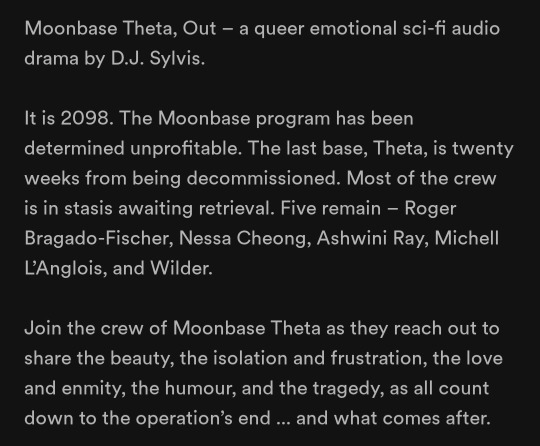
The Pilgrimage Saga - very good, sadly underrated, definitely a must-try
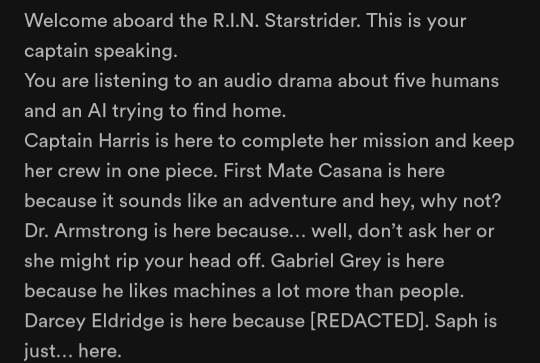
King Falls AM - this one is a bit controversial but I enjoyed it, I think you should check it out

there you go, hope you'll enjoy!! ♡
6 notes
·
View notes
Text








Photographs alongside their anime counterpart of Kaede Hondo (Sakura Minamoto), Maki Kawase (Junko Konno) & Rika Kinugawa (Yugiri) on their "Official Bus Tour of the Holy Land Pilgrimage" trip to Saga Prefecture at the start of 2019, where they alongside various staff from the anime visited various real life locations featured in the first season of the anime.
#Kaede Hondo#Maki Kawase#Rika Kinugawa#seiyuu#Zombieland Saga#anime caps#Official Bus Tour of the Holy Land Pilgrimage#Saga
32 notes
·
View notes